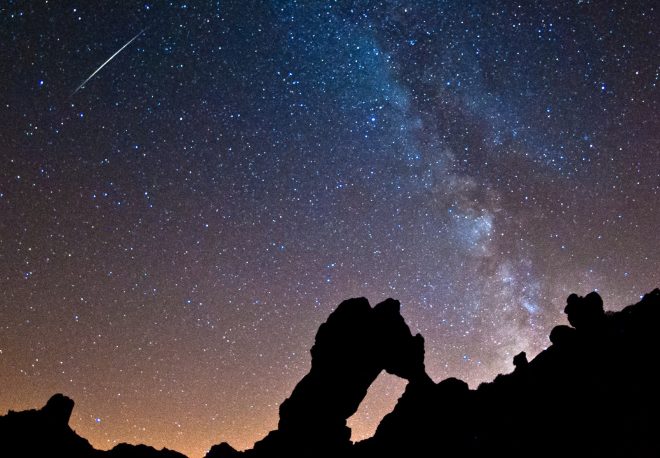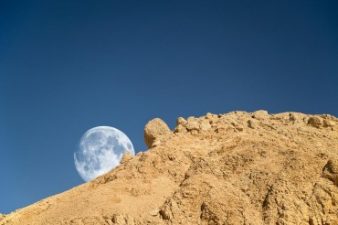 Our planet is passing through the path of Comet Swift-Tuttle, a once-in-133-years-or-so event happening this year from July 17 to Aug. 24. But this week we encounter the densest area of this celestial debris field when we’ll spot the most meteors in the shortest time period. So why are you reading this article? Grab a blanket, head outdoors, and look to the night sky!
Our planet is passing through the path of Comet Swift-Tuttle, a once-in-133-years-or-so event happening this year from July 17 to Aug. 24. But this week we encounter the densest area of this celestial debris field when we’ll spot the most meteors in the shortest time period. So why are you reading this article? Grab a blanket, head outdoors, and look to the night sky!
The Perseid meteor shower shows up every August, a spectacular sky-show that spurts about 100 meteors on an hourly basis. Astronomers promise this year’s event to be especially dazzling – with a predicted 200 meteors per hour – a doubled display thanks to the gravitational pull of the planet Jupiter.
Scientific “trash talk” from Bill Cooke, head of NASA’s Meteoroid Environments Office, provides a bit of backstory, “Jupiter is a real gravitational bully,” he says on the NASA website, “In our solar system there’s the sun and Jupiter and the rest is garbage.”
The meteors are a byproduct of the Swift-Tuttle comet. With a 26 kilometers-wide nucleus, it’s the largest object known to repeatedly pass by Earth. According to Space.com, it last passed during its 1992 orbit around the sun, and the next time will be in 2126. But we cross its residual debris field every year, when fragmentary dust hits earth’s atmosphere at a breath-taking 124,000 miles per hour, reaching temperatures ranging from 3,000 to 10,000 °F as they explode in fiery flashes better known as “shooting stars”.
Meteors will seem to radiate out of the constellation Perseus in the northern sky, appearing above the horizon around 10 PM in your local time, with the real show becoming visible after midnight.
NASA explains that several times each century, when Jupiter passes Swift-Tuttle’s legacy of litter, the gaseous planet’s gravitational field bends part of the debris field a bit closer to Earth, pushing our planet into an atypically dense deluge of comet detritus. The death dance is spectacular.
Robert Massey of Britain’s Royal Astronomical Society provides a snappy overview of the Perseid meteor showers in the video below:
[youtube]https://youtu.be/WimO_lDdHPk[/youtube]
North American skywatchers will see meteors dating back to the first millennium. People in the Middle East and Asia will see newer dust from the comet’s later circuits around Earth in the 15th and 19th centuries.
So slather on some bug spray, grab a blanket, and head out tonight to catch the show. NASA suggests allowing 45 minutes for your eyes to adjust to the dark. If you live in a light-polluted area, or are experiencing inclement weather – you can still see what’s happening on the space agency’s website which is “sky-streaming” from the Marshall Space Flight Center in Huntsville, Alabama.
Mother Nature still provides the best in entertainment.

